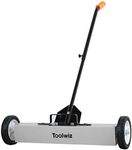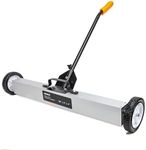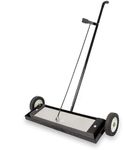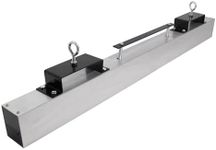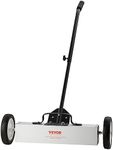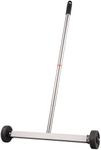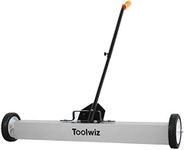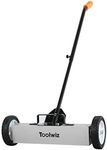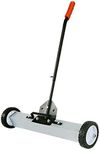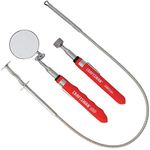Buying Guide for the Best Magnetic Sweepers
Choosing the right magnetic sweeper can make cleaning up metal debris much easier and safer, whether you're working in a garage, on a construction site, or around your home. The key is to match the sweeper's features to your specific needs, considering the size of the area, the type of debris, and how often you'll use it. Understanding the main specifications will help you pick a sweeper that is both effective and convenient for your tasks.Magnetic StrengthMagnetic strength refers to how powerful the magnet is at picking up metal objects. This is important because a stronger magnet can lift heavier or more deeply embedded debris, while a weaker magnet may only pick up small, surface-level items. Magnetic strength is often measured in pounds of pull or gauss. For light-duty tasks like picking up nails or screws in a small workshop, a lower strength is usually enough. For larger areas or heavier debris, such as bolts or metal shavings on a construction site, you'll want a sweeper with higher magnetic strength. Think about the typical size and weight of the debris you'll be collecting to guide your choice.
Sweeping WidthSweeping width is the size of the area the sweeper can cover in one pass. A wider sweeper can clean large areas more quickly, while a narrower one is easier to maneuver in tight spaces. Sweeping widths can range from about a foot to several feet. If you have a big, open area to clean, a wider sweeper will save you time. For smaller or cluttered spaces, a narrower sweeper will be easier to handle and more precise. Consider the layout and size of your workspace when deciding on the right width.
Handle Type and AdjustabilityThe handle type and its adjustability affect how comfortable and easy the sweeper is to use. Some sweepers have fixed handles, while others are adjustable in length or angle. Adjustable handles can make the sweeper more comfortable for users of different heights and can help you reach under objects or into corners. If you'll be using the sweeper for long periods or sharing it with others, look for one with an adjustable handle to reduce strain and improve usability.
Release MechanismThe release mechanism is how you remove the collected metal debris from the magnet. Some sweepers require you to manually pull the debris off, while others have a quick-release feature that drops the debris with a lever or button. A quick-release mechanism is especially helpful if you need to empty the sweeper frequently or want to avoid touching sharp or dirty debris. If convenience and safety are priorities for you, look for a sweeper with an easy-to-use release system.
Wheels and MobilityWheels and overall mobility determine how easily you can move the sweeper over different surfaces. Larger wheels are better for rough or uneven ground, while smaller wheels work well on smooth floors. Some sweepers are designed to be pushed like a broom, while others can be towed behind a vehicle. Think about where you'll be using the sweeper most often—indoors, outdoors, on gravel, grass, or pavement—and choose a model with wheels and mobility features that suit those surfaces.
Construction and DurabilityThe construction and durability of the sweeper refer to the materials used and how well it stands up to regular use. Sweepers made from sturdy metals and high-quality plastics will last longer, especially in tough environments. If you plan to use the sweeper frequently or in demanding conditions, look for one with a solid build and good reviews for durability. For occasional, light use, a lighter-duty model may be sufficient.
